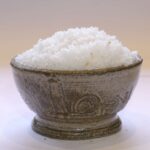Introduction to Provolone Cheese
Provolone cheese is more than just a delightful addition to your cheeseboard. This Italian favorite boasts a rich history and offers a myriad of flavors that can elevate any dish.
Whether you’re melting it over pasta, layering it in a sandwich, or enjoying it on its own, provolone has something special to offer.
But who exactly can benefit from this versatile cheese? From health enthusiasts to culinary adventurers, many people stand to gain from incorporating provolone into their diets.
With its unique taste and impressive nutritional profile, it’s time to explore why provolone deserves a spot in your kitchen!
History and Origin of Provolone Cheese
Provolone cheese has its roots deep in Italy, tracing back to the Southern regions of Campania and Apulia. This semi-hard cheese is believed to have originated in the late 19th century, evolving from traditional pasta filata techniques used for mozzarella.
Originally crafted by local shepherds, provolone was a staple for those seeking sustenance during long days tending to livestock. The name “provolone” itself derives from the Italian word “provola,” referring to a smaller round cheese.
Throughout history, provolone expanded beyond its humble beginnings. It gained popularity across Italy and later made its way into various culinary traditions worldwide. Today, it comes in two primary varieties: Provolone Dolce, which is milder and aged for about two to three months, and Provolone Piccante, with a sharper flavor resulting from longer aging periods that can stretch up to several years.
This rich heritage contributes significantly to its distinctive taste profile and versatility in modern cooking.
The Nutritional Benefits of Provolone Cheese
Provolone cheese offers a delightful blend of taste and nutrition. It is rich in protein, making it an excellent choice for those looking to build or maintain muscle mass. Each serving provides a substantial amount of calcium, essential for strong bones and teeth.
What sets provolone apart is its lower lactose content compared to many other cheeses. This quality can make it more tolerable for those with lactose sensitivity.
Additionally, provolone contains vitamins A and B12. These vitamins play crucial roles in maintaining healthy vision and supporting the nervous system respectively.
Moreover, this cheese includes healthy fats that provide energy without spiking blood sugar levels. Its versatility allows you to enjoy it in various dishes while reaping its nutritional benefits seamlessly during meals or snacks.
How to Incorporate Provolone Cheese into Your Diet
Provolone cheese can elevate a variety of dishes. Try adding slices to your sandwich for an extra layer of flavor. It melts beautifully, making it perfect for paninis or grilled cheese.
For a quick snack, pair provolone with fresh fruits like apples or pears. The combination works well and adds nutritional value.
You can also use provolone in salads. Shred some over mixed greens along with nuts and berries for a delightful crunch.
Cooking enthusiasts might enjoy incorporating it into pasta dishes. A sprinkle on top before baking will create a deliciously gooey topping.
If you’re feeling adventurous, try using provolone in pizza recipes or as part of a charcuterie board at gatherings. Its semi-hard texture complements various meats and olives nicely, enhancing the overall experience without overpowering other flavors.
Provolone Cheese for Different Dietary Needs: Vegetarian, Keto, Gluten-Free
Provolone cheese is incredibly versatile, making it a great addition to various diets. For vegetarians, it’s often suitable as it is made from cow’s milk and doesn’t include animal rennet in some varieties. Always check labels for specifics.
Keto enthusiasts will love provolone cheese due to its low carbohydrate content. It’s rich in healthy fats and can easily fit into meals or snacks while helping maintain ketosis.
Gluten-free eaters can enjoy provolone without worry. This cheese contains no gluten, allowing those with sensitivities to indulge without risk of digestive issues.
Adding provolone to salads, sandwiches, or charcuterie boards enhances flavor and texture across different dietary lifestyles. Its melting properties make it perfect for casseroles or grilled dishes too!
Health Benefits of Provolone Cheese
Provolone cheese offers a variety of health benefits that make it an excellent addition to your diet. Rich in protein, it supports muscle growth and repair, making it ideal for active individuals.
This cheese is also a good source of calcium. Strong bones and teeth benefit from the calcium content found in provolone. Regularly consuming this cheese can help maintain bone density as you age.
Another advantage is its vitamin B12 levels. This essential nutrient aids in red blood cell formation and nerve function. For those who may not get enough B12 from other sources, provolone provides a tasty alternative.
The presence of healthy fats helps promote satiety, which can be beneficial for weight management when enjoyed in moderation. With its unique flavor profile, incorporating provolone into meals can enhance both taste and nutrition effortlessly.
Conclusion: Why Everyone Can Benefit from Adding Provolone Cheese to Their Diet
Provolone cheese stands out as a versatile and delicious addition to many diets. Its rich flavor profile can elevate dishes while providing essential nutrients. Whether you’re a vegetarian looking for protein sources, following a keto lifestyle, or needing gluten-free options, provolone fits the bill.
For those seeking health benefits, this cheese is packed with calcium and other vital vitamins that support overall well-being. You can easily incorporate it into various meals—from sandwiches to salads—and even enjoy it on its own as a snack.
Adding provolone cheese to your diet not only enhances taste but also contributes positively to nutrition. Embracing this delightful cheese could be one of the tastiest decisions you make for your health and culinary adventures.





